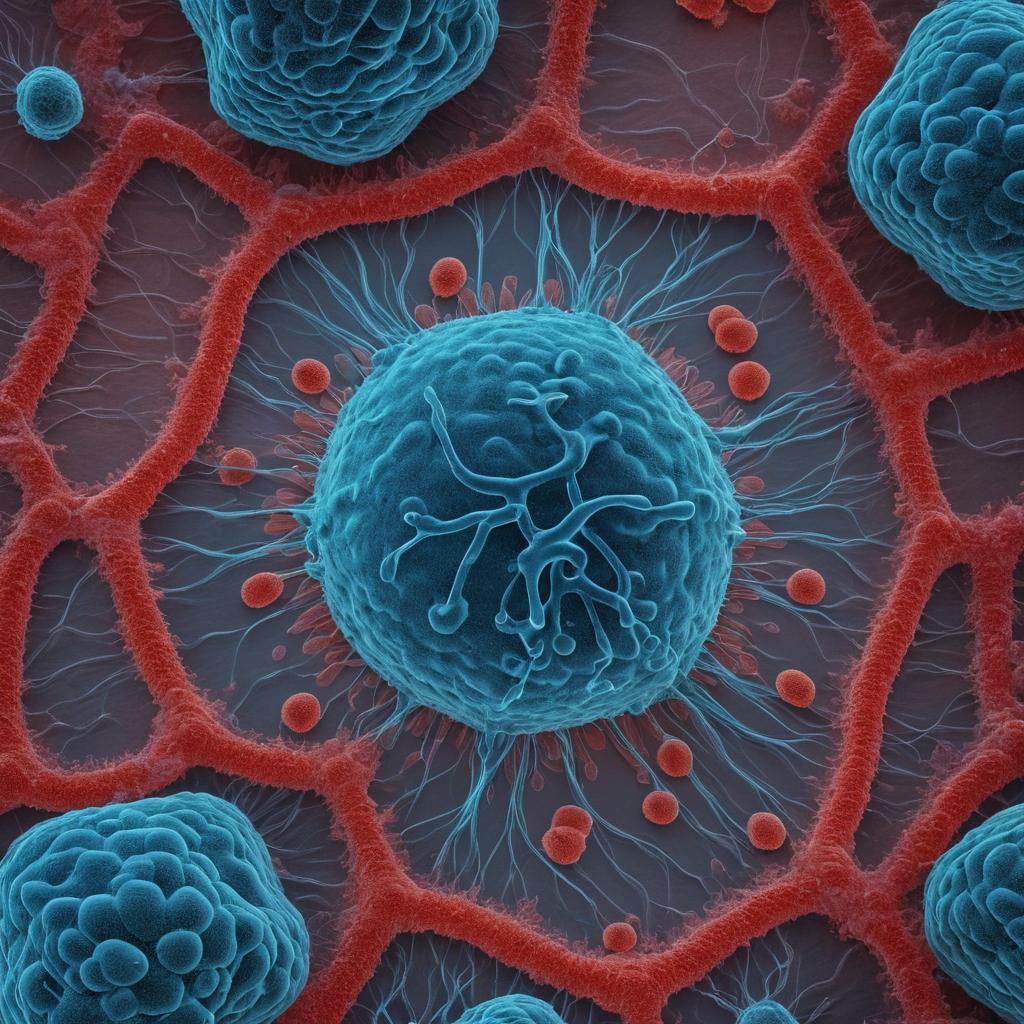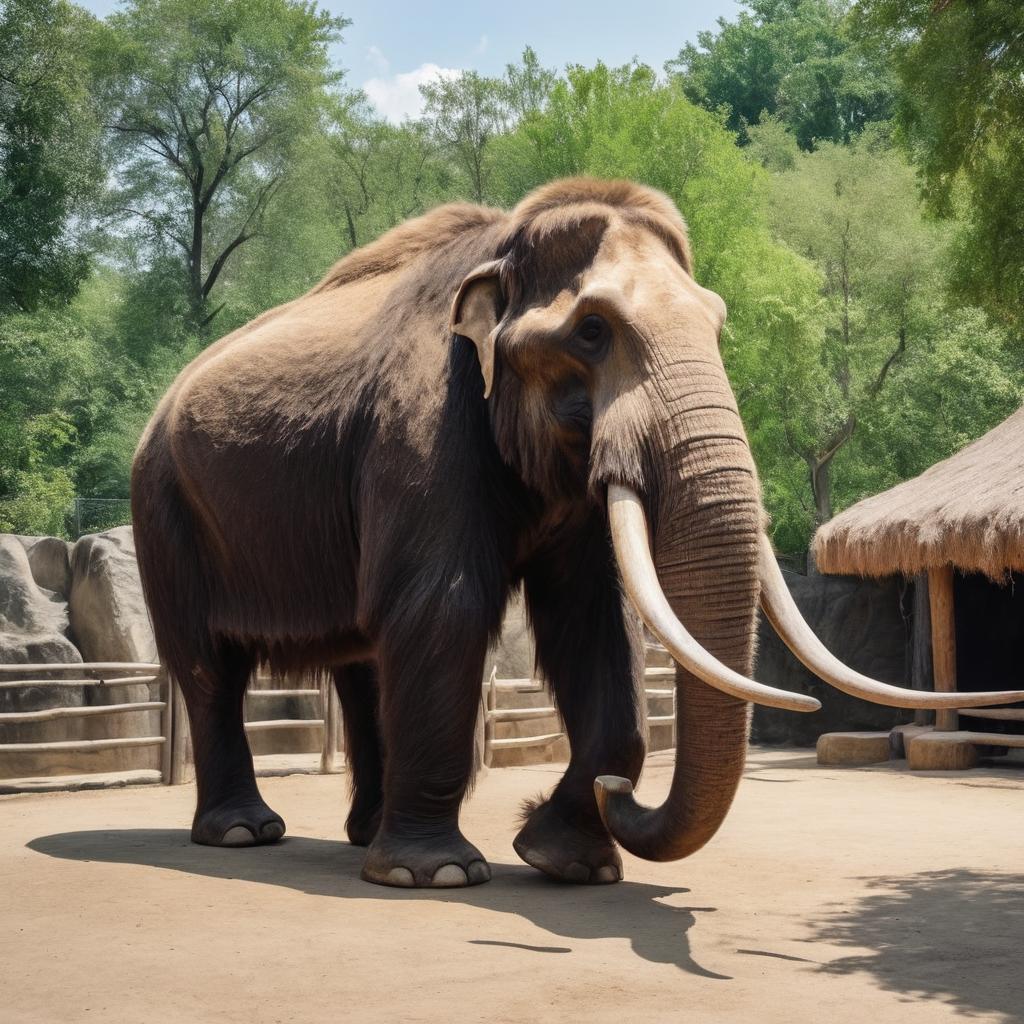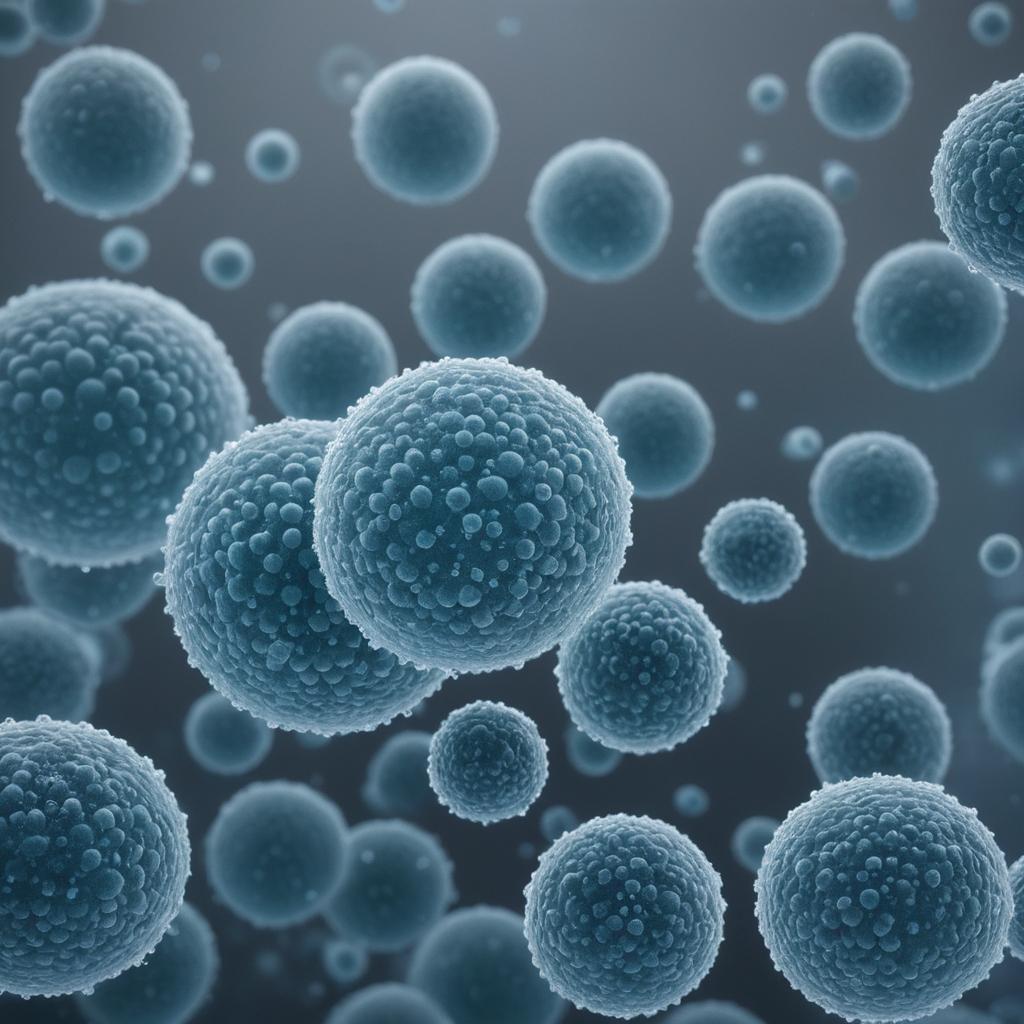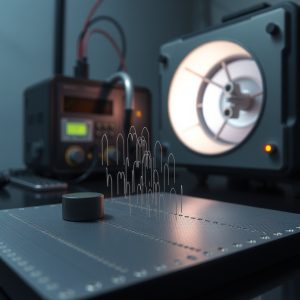
As the field of biology continues to evolve, the integration of artificial intelligence (AI) has revolutionized scientific research by unlocking hidden secrets within cells.
The use of AI models has allowed researchers to analyze vast amounts of raw cellular data with unprecedented speed and accuracy, leading to groundbreaking discoveries that were previously out of reach for traditional methods.
In this article, we will delve into the latest breakthroughs in biology research facilitated by AI, including the creation of elephant stem cells, the discovery of a mysterious galaxy, and the identification of rare kidney cells through foundation models.
How machine learning could help biology?
In recent years, the intersection of artificial intelligence (AI) and cellular biology has led to groundbreaking discoveries and transformative advancements. Researchers are harnessing the power of machine learning algorithms to unravel the mysteries of cells, proteins, and biological processes. Let’s delve into how AI is shaping the future of cellular biology.
1. Protein structure prediction
One of the most significant breakthroughs facilitated by AI is in predicting the D structures of proteins. Traditionally, determining protein folding was a labor-intensive process, often taking months or even years. However, AI tools like AlphaFold, developed by DeepMind, have revolutionized this field. AlphaFold leverages machine learning to predict protein structures accurately and rapidly. By analyzing DNA sequences and evolutionary histories, AlphaFold can generate D models for thousands of proteins. Researchers can now explore protein functions, interactions, and potential drug targets more efficiently.
In a recent study published in Nature, researchers compared the efficiency of AlphaFold to that of a single human researcher in predicting the 3D structures of proteins. The results showed that AlphaFold was not only faster but also more accurate than a human scientist.
The study involved 147 challenging protein targets, which were selected based on their difficulty level and lack of structural information. Researchers asked 21 expert biochemists to predict the structure of these proteins using conventional methods, while AlphaFold was also given the same challenge. The results showed that AlphaFold outperformed humans in terms of accuracy, with a median global distance test score (GDT) of 90, compared to a GDT of 81 for human scientists.
Moreover, AlphaFold was able to predict structures much faster than humans, taking only a few days to solve each protein, while humans took several weeks or months. This speed and accuracy have the potential to transform the field of biology by enabling researchers to quickly and accurately identify new drug targets and understand the mechanisms behind diseases at a molecular level.
2. Drug discovery and design
AI plays a pivotal role in drug discovery. By analyzing vast datasets, AI algorithms identify potential drug candidates and predict their interactions with cellular components. These predictions guide researchers in designing novel drugs with enhanced efficacy and reduced side effects. Machine learning models can also optimize drug properties, such as bioavailability and binding affinity, leading to faster drug development cycles.
Several groundbreaking projects and companies are pushing the boundaries of AI-driven drug discovery:
- Atomwise: Their platform, AtomNet, uses deep learning techniques to predict the binding of small molecules to proteins, enabling rapid screening of potential drug candidates.
- Exscientia: A pioneer in AI-driven drug design, this company has successfully brought the first AI-designed drug into clinical trials for the treatment of obsessive-compulsive disorder.
- BenevolentAI: Their Knowledge Graph platform combines massive biomedical data with AI to identify novel drug targets and repurpose existing drugs for new diseases.
- Insilico Medicine: This company uses generative AI models to design new molecules with desired properties, accelerating the discovery of drugs for age-related diseases.
AI promises to make drug discovery faster, cheaper, and more successful. While still in its relatively early stages, the potential of AI to address complex diseases, improve target selectivity, and reduce toxicity in drug development is undeniable. As AI algorithms continue to improve and datasets become more comprehensive, we can expect even more revolutionary breakthroughs in drug discovery, leading to a new era of effective and personalized therapies.
3. Biomarker identification
Biomarkers, as biological indicators of diseases, are fundamental to modern medicine. They are essential for early diagnosis, risk assessment, disease monitoring, and designing personalized treatments. Traditionally, the search for reliable biomarkers has been a complex and time-consuming process. However, the integration of artificial intelligence (AI) is transforming this field, driving faster and more accurate biomarker discovery.
AI algorithms analyze genomic, proteomic, and metabolomic data to identify relevant biomarkers. These markers aid in early disease detection, personalized medicine, and monitoring treatment effectiveness. For instance, AI-driven analyses have identified specific gene expression patterns associated with cancer subtypes, allowing for targeted therapies.
AI-driven biomarker identification offers also others numerous benefits:
It facilitates faster discovery of biomarkers, potentially leading to earlier disease diagnosis and more rapid development of new treatments. AI also contributes to improved accuracy in biomarker identification, a critical step towards precise diagnostics and prognostics. Moreover, AI paves the way for personalized medicine by helping identify biomarkers that predict how patients will respond to specific therapies. The use of AI algorithms can uncover previously unknown biomarkers, providing novel insights and ultimately leading to the development of targeted therapies
4. Cellular image analysis
Artificial intelligence is revolutionizing how we analyze microscopic images of cells. AI algorithms, particularly deep learning techniques, can identify and outline individual cells within complex images, measure and quantify their size, shape, texture, and other visual features, track cell movement over time, and even categorize cells into different types or states. This offers several advantages over traditional analysis methods. AI can process huge amounts of image data much faster than humans, reducing bias and providing more accurate, consistent results. It can also detect subtle patterns and changes in cells that might be overlooked by human experts, potentially leading to novel discoveries.
The applications of AI in cellular image analysis are rapidly expanding. In pathology, AI assists in cancer diagnosis by identifying abnormal cells and tissues. Pharmaceutical companies use AI to accelerate drug development by analyzing cellular responses to potential treatments. Meanwhile, researchers in cell biology, immunology, and other fields gain deeper insights into cell structure, function, and behavior with the help of AI analysis tools.
While incredibly powerful, AI is not intended to fully replace human experts. AI models rely on human expertise for quality control and to interpret complex results effectively. The most successful applications often involve a collaboration between humans and AI, where AI handles the initial analysis and pinpoints areas of interest, freeing experts to focus on nuanced interpretations and decision-making.
The future of cellular image analysis will depend on factors like the quality and quantity of training data available for AI, the standardization of imaging techniques, and advancements in making AI models more explainable.
5. Predicting cellular interactions
Cells within our bodies are like members of a bustling community, constantly communicating and influencing one another’s behavior. These cellular interactions form the foundation for everything from healthy growth to how diseases spread. Understanding this intricate cellular dialogue is like unlocking a biological treasure chest, offering new ways to combat disease and improve human health.
This is where Artificial Intelligence (AI) steps into the picture as a powerful detective. AI can analyze massive amounts of biological data, such as the detailed activity profiles of thousands of individual cells. Within this data lies a wealth of hidden patterns and relationships that might be too subtle for the human eye to catch. AI models can learn to recognize the molecular ‘handshakes’ that signify communication between cells, allowing them to predict new interactions that scientists may not have considered.
Moreover, AI’s power goes beyond identifying these interactions; it can also simulate what happens if a particular communication link is broken. This is akin to a virtual experiment, giving researchers insights into the potential effects of a drug before it’s even tested in the lab.
Different flavors of AI are used for this detective work. Some concentrate on analyzing patterns across vast collections of cell data, searching for pairs of cells whose activity seems consistently linked. Others take a more ‘spatially-aware’ approach, considering where the cells are located within a tissue since neighboring cells are more likely to be engaged in conversation.
Imagine the impact of AI-powered cellular interaction prediction – doctors could pinpoint exactly where communication goes wrong within a diseased tissue, opening the door to precisely targeted treatments. New drugs could be designed and tested much faster by simulating their impact on the entire cellular network. Eventually, we may see personalized medicine where doctors can predict a patient’s unique response to therapy based on their specific cellular makeup.
Which companies are at the forefront of AI applications in biology and bioengineering
At the forefront of AI-enabled cellular research is Colossal Biosciences, a Dallas-based company that has successfully reprogrammed Asian elephant cells to create stem cells for the first time in history.
These cells hold the potential to potentially bring back extinct mammoths, with scientists hoping to create a mammoth hybrid that looks exactly like its long-extinct counterpart. This breakthrough could pave the way for resurrecting woolly mammoths and help restore vulnerable Arctic tundras affected by global warming.

The creation of elephant stem cells and the potential resurrection of extinct mammoths through hybridization has the potential to revolutionize our understanding of conservation biology and impact human society in various ways. If successful, it could help restore vulnerable ecosystems like the Arctic tundra that are at risk due to global warming. This breakthrough is similar to the scenario depicted in the movie Jurassic Park as it involves bringing back extinct species using scientific methods.

From micro-scale to cosmic scale
Another fascinating scientific discovery facilitated by AI models is the revelation of a mysterious galaxy that existed when the universe was only 700 million years old – the oldest “dead” galaxy ever observed. This revelation challenges the previously held belief that galaxies had formed through mergers, and instead suggests that they could have started as small objects before growing larger.
Furthermore, a loaf of bread discovered in Turkey has been identified as the world’s oldest known bread. Radiocarbon dating has revealed that the 5,000-year-old bread is much older than previously thought, shedding light on the evolution of bread and its significance throughout history.
Additionally, the discovery of toothless bird fossils in New Zealand challenges the widely held belief that birds evolved from dinosaurs with beaks. These new findings suggest that avian evolution may have been more complex than previously thought, with the possibility of multiple evolutionary paths for birds.
Moreover, evidence of ancient humans in Europe 1.4 million years ago has been discovered using a uniquely celestial method. The discovery of a star’s properties over time has enabled scientists to determine that ancient humans were present in Europe during this period.
Other notable discoveries include the revelation of tower pyramid-like star dunes that began forming thousands of years ago, a potential explanation for the fabled “death ray” of Archimedes through the lens of a 13-year-old boy’s insights, and differences in observing this year’s eclipse compared to the one that occurred in 2017.
As AI models become more powerful with the increased availability of cellular data, it is crucial to use them with caution as they may make mistakes due to their limitations. Nonetheless, these models hold immense potential for predicting what real cells would do in any situation and potentially creating new cells that don’t exist in nature.







The author of this article is overly optimistic about the role of AI in cell research. They claim that AI has “revolutionized” scientific research, but they fail to provide concrete evidence to support this assertion.
In reality, while AI has certainly made some progress in analyzing cellular data, it still has a long way to go before it can rival human expertise. For example, AlphaFold, the AI tool mentioned in the article, is only able to predict protein structures with an accuracy of 90%, which is not significantly better than human researchers.
Moreover, the author’s reliance on anecdotal evidence and case studies undermines their argument. They mention Colossal Biosciences’ successful reprogramming of Asian elephant cells as a breakthrough, but they fail to provide any context or explanation for why this achievement is significant.
In my professional experience as a dealer, I can attest that AI has its limitations when it comes to complex biological systems. While AI can analyze vast amounts of data quickly and accurately, it often lacks the nuance and contextual understanding that human researchers bring to the table.
For instance, in the field of cellular image analysis, AI is only able to detect patterns and changes in cells that are consistent with its training data. However, this does not account for the many subtle variations and exceptions that occur in real-world biological systems.
Furthermore, the author’s discussion of the potential applications of AI in cell research is overly speculative. They suggest that AI could be used to predict cellular interactions, but they fail to provide any concrete evidence or examples of how this might work in practice.
In my opinion, while AI has some potential for improving cell research, its limitations and shortcomings must not be overlooked. As a dealer, I have seen firsthand the dangers of relying too heavily on technology and ignoring the complexities of real-world biological systems.
As we move forward with the development of AI tools for cell research, we must remain cautious and critical of their limitations. We must also continue to invest in human expertise and collaboration, as these are essential for achieving breakthroughs in this field.
“Josue Mcleod’s assertion that AI has ‘a long way to go’ before it can rival human expertise is an understatement. In light of the recent revelations about ambulances being ‘waste vital time’ on prison call-outs, one can’t help but wonder if our reliance on technology hasn’t already led us down a path from which there’s no return.”
“I find it intriguing that Josue Mcleod, a self-proclaimed dealer, brings his expertise to the table to critique the article. While I appreciate his candor, I must say that I’m underwhelmed by his arguments.
Firstly, let’s address his claim that AlphaFold’s 90% accuracy is not significantly better than human researchers. I’d argue that a 10% margin of error in protein structure prediction is substantial, especially when considering the complexity of cellular interactions. Moreover, AI’s ability to analyze vast amounts of data quickly and accurately often surpasses human capabilities.
Regarding Josue’s criticism of anecdotal evidence, I believe that case studies like Colossal Biosciences’ reprogramming of Asian elephant cells provide valuable insights into the potential applications of AI in cell research. While context and explanation are essential for a comprehensive understanding, they don’t undermine the significance of these achievements.
As a researcher, I’ve seen firsthand how AI can augment human expertise, providing new perspectives and insights that might have gone unnoticed otherwise. Josue’s assertion that AI lacks nuance and contextual understanding is understandable, but it ignores the fact that AI systems can be designed to account for subtle variations and exceptions in real-world biological systems.
Furthermore, I take issue with Josue’s dismissive tone towards the potential applications of AI in cell research. While speculation is inherent in any discussion of emerging technologies, I believe that exploring these possibilities is essential for driving innovation and progress.
In conclusion, while I acknowledge the limitations of AI tools in cell research, I’m not convinced by Josue’s assertion that their shortcomings must be overlooked. As researchers, we must continue to push the boundaries of what is possible with AI, while also acknowledging its potential pitfalls.”
“Wow Rosalie, I’m impressed but not convinced! You say that a 10% margin of error in protein structure prediction is substantial, but don’t you think that’s underplaying the significance of human researchers’ intuition and expertise? I mean, AI may be able to analyze vast amounts of data quickly, but can it replicate the human touch when it comes to experimental design and troubleshooting? And what about the case studies you mentioned? Don’t they highlight the limitations of AI in cell research rather than its potential applications?
As a matter of fact, I was at a conference yesterday where a speaker from Colossal Biosciences presented their reprogramming of Asian elephant cells. What struck me was how they had to manually intervene and correct for errors that AI had flagged but couldn’t quite resolve on its own. Now, don’t get me wrong – AI is certainly capable of augmenting human expertise, but it’s not a silver bullet by any means. And what about the issue of data bias? Don’t you think that’s a critical concern when it comes to relying on AI tools for cell research?
Lastly, I take umbrage with your characterization of my tone as ‘dismissive’. Let me tell you – as a researcher myself, I’ve seen firsthand how AI can be overhyped and oversold. And that’s exactly what’s happening here – we’re being asked to overlook the limitations of AI tools in cell research without any real consideration of the potential pitfalls. Sorry Rosalie, but I think we need to take a step back and re-evaluate our priorities before we start putting our trust in these machines.
“